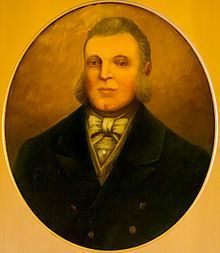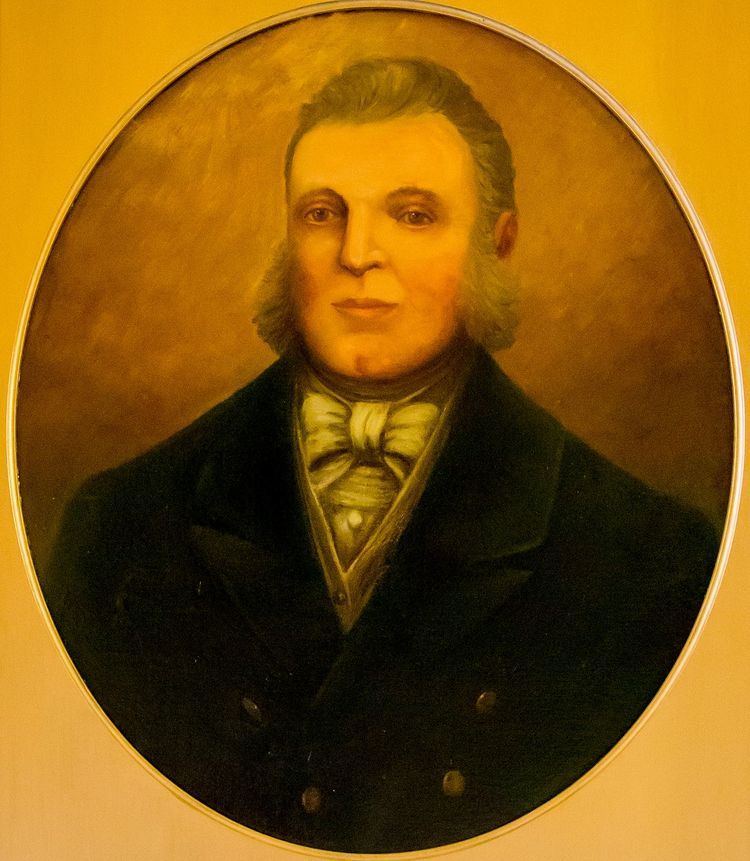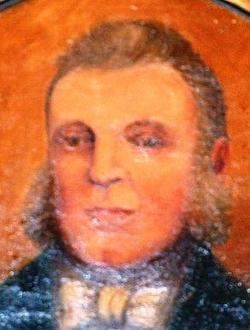Spouse(s) Amey Comstock Succeeded by Henry Smith Religion Baptist Resigned October 15, 1805 | Name Arthur Fenner Children James Fenner | |
 | ||
Previous office Governor of Rhode Island (1790–1805) | ||
Arthur Fenner (December 10, 1745 – October 15, 1805) served as the fourth Governor of Rhode Island from 1790 until his death in 1805. He has the seventh longest gubernatorial tenure in post-Constitutional U.S. history at 5,641 days. Fenner was a prominent Country Party (Anti-federalist) leader. Around 1764, Fenner joined several others as a petitioner for the chartering of the College in the English Colony of Rhode Island and Providence Plantations (the original name for Brown University).[1]
Contents

Early life

Fenner was born in 1745 to a prominent family in Providence in the Colony of Rhode Island and Providence Plantations. His ancestor Captain Arthur Fenner (1622–1703) had been a member of the Town Council, an associate of Roger Williams, and fought in King Philip's War. His parents were Arthur Fenner, Jr. (1699–1788) and Mary Olney. The Fenner family owned the wharf where the Gaspee Affair occurred in 1772.
Governorship
He served as governor of Rhode Island from 1790 to 1805 and died in office. Fenner was governor of Rhode Island when it became the last of the thirteen states to ratify the Constitution on May 29, 1790. The following quote is from the Dictionary of American Biography:
In March 1790, the contest between Federalists and Anti-Federalists in Rhode Island reached its height, (and) the long-delayed convention to decide upon the adoption of the Constitution (had) been called, (with) Governor Collins having become unpopular in consequence. (With the elections approaching,) Deputy-Governor Owen was offered the governor-ship by the Anti-Federalists, but declined to serve. ‘A movement,’ says Arnold, ‘was made in Providence to form a coalition party. The Newport committee united with them in proposing (to put on the ballot) Arthur Fenner, an Anti-Federalist. The Anti-Federalists triumphed, and on May 5, 1790, the general assembly declared Fenner governor and Samuel J. Potter deputy-governor.Opposition to entering the Union was so strong, … (that a vote to adopt the Constitution) was delayed until the last week in May, and when on the 29th, a decision was reached, the vote stood thirty-four to thirty-two in favor of adopting the Constitution.Governor Fenner was very popular, and continued in office, serving at the time of his death.Significant events during Fenner's time in office:
Personal life
Governor Fenner married Amey Comstock (born ca. 1749; died September 5, 1828, in her 80th yr.), daughter of Gideon Comstock of Smithfield, Rhode Island.
His son, James Fenner, gave up his position as a US senator to be elected governor two years after his father’s death. James served from 1807 to 1811, from 1824 to 1831, and from 1843 to 1845. Arthur and Amey Fenner were members of the First Baptist Church in America, at Providence. They had four children:
- Arthur Fenner, Jr. (born November 9, 1766 – died September 27, 1837); fifer in various companies; lived at Fairfield, New York in 1827; married Lydia Sabin (born 1766), daughter of Thomas Sabin, on December 8, 1787. They had Harriet Elizabeth (born February 7, 1805 – died May 2, 1829).
- James Fenner (born January 22, 1771 – died April 17, 1846); Governor of Rhode Island, married Sarah Jenckes.
- Joseph (born ca. 1773 – died July 18, 1797 in Providence, age 24).
- Sally (born 1778 – died August 21, 1794 at Newport, age 16).
